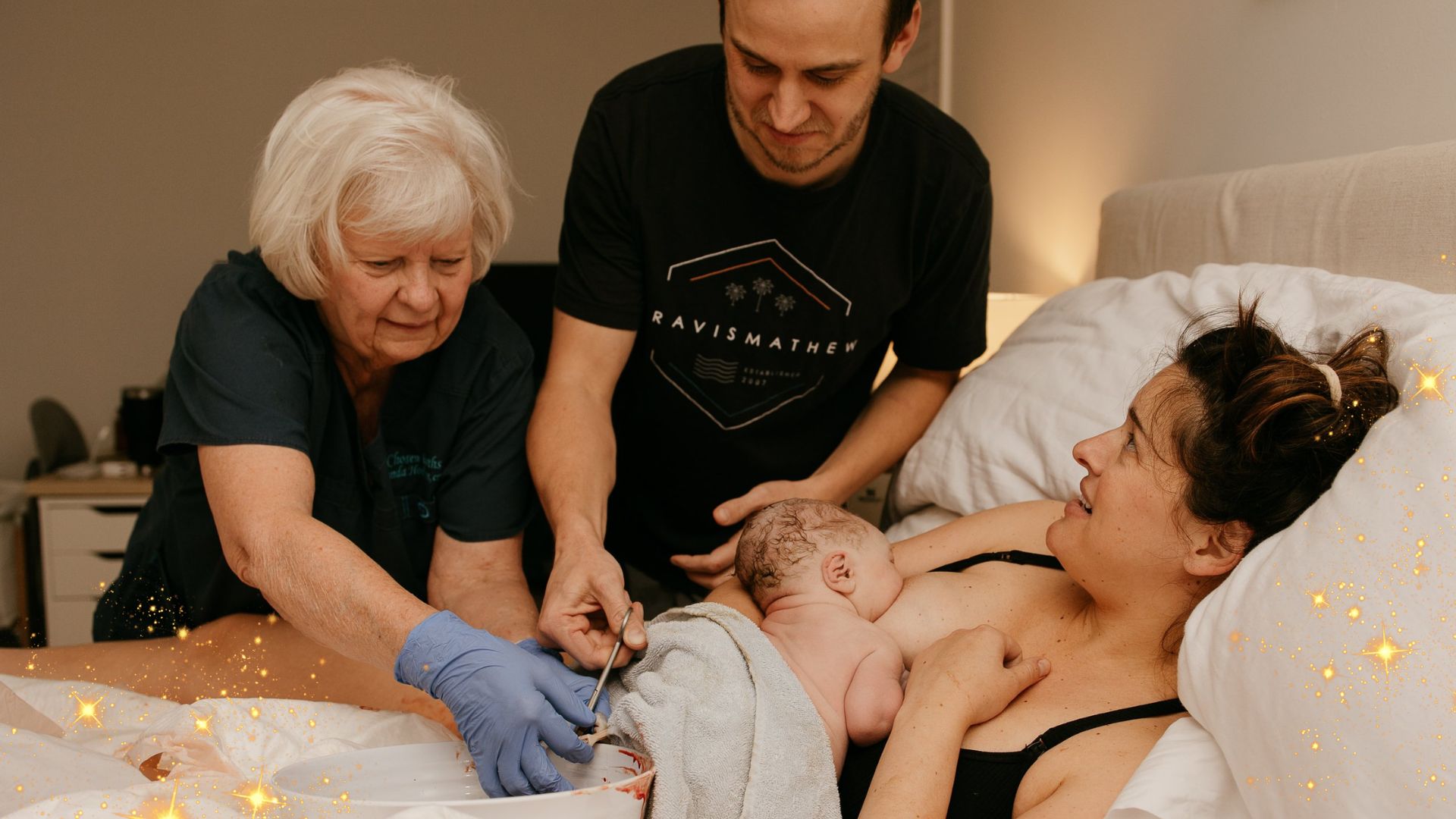Doula vs. Midwife: Choosing Your Path

Birth work is an ancient calling—one that goes beyond certifications, training, or medical credentials. It is a path walked by those who feel the pull to hold space for women in one of the most profound moments of life.
Throughout the ages, for all of time, birth has been women’s business—guided and held by those who understood the rhythms and cycles of nature, birth and death, the rite's of passages and the sacred transitions of life.
Today, that knowledge has been divided into roles: doulas and midwives.
But what if you feel called to something deeper?
This blog explores the differences between doulas and midwives, their training, skills, and limitations, and why many women are now seeking something beyond both—the path of the Sacred Birth Worker.
How to Become a Doula or Midwife

Becoming a Doula
A doula is a non-medical birth worker who provides emotional, physical, and informational support before, during, and after birth.
To become a doula, you typically:
- Choose a training program – There are mainstream certifications (DONA, CAPPA) and holistic more comprehensive programs.
- Complete coursework – Studying birth physiology, comfort techniques, and advocacy.
- Attend births as a trainee – Some programs require attending a certain number of births.
- Get certified (optional) – Certification is not legally required and not always wanted.
Doula trainings can take anywhere from a few days to several months, depending on the depth of the program.
While doulas provide invaluable support and guidance, they are not medical providers and most doula trainings leave them with limited knowledge which results in many not being able to or even being afraid to advocate for their clients especially in hospital settings.

Becoming a Midwife
A midwife is a medical provider who is trained to monitor and manage pregnancy, labor, and provide postpartum care.
Unlike doulas, midwives:
- Often have university degrees and a comprehensive knowledge base, skills and training
- Perform medical procedures such as cervical exams, suturing, and newborn resuscitation.
- Manage complications and emergencies and determine if medical intervention is necessary.
- Collaborate with other health care professionals on the woman's behalf
- Prescribe certain medications, depending on the country or licensing board.
To become a midwife, you typically:
- Complete formal education – This can take 3–5 years, depending on whether you become a nurse-midwife (CNM) or a direct-entry midwife (CPM/LM).
- Train in hospital, birth center, and/or home birth settings – Midwives work under supervision by mentors before practicing independently for an extensive period.
- Pass licensing exams – Most countries require midwives to be licensed.
While midwives hold medical authority and are educated to be autonomous practitioners, they are also bound by hospital regulations, and national and international regulatory boards and institutions.
This makes being woman centered and practicing evidence based care while holding a registration hard and sometimes impossible in some places.
Many independent midwives face persecution, making it difficult to practice freely even as home birth midwives.

Doula vs. Midwife: Differences in Knowledge, Skills & Education
| Role |
Doula |
Midwife |
|
Education |
Short training (weeks/months), certification optional |
Long education (3–5 years), licensing required |
|
Role in Birth |
Emotional & physical support, no medical care |
Provides medical care, manages complications & emergencies |
|
Medical Training |
None |
Trained in prenatal care, birth, and postpartum |
|
Legal Restrictions |
No licensing required, and if not certified does not answer to any institution |
Licensed & regulated, restricted in her scope of practice by regulatory bodies |
|
Advocacy Ability |
If not certified is free to advocate in all birth settings including hospitals |
Often bound by hospital protocols & legal risks, serves the institution first |
Doulas provide support and comfort and can advocate for their clients in all birth settings if they don't certify with bodies who surpress such advocacy.
Midwives can provide medical care but are often limited by hospital policies and legal liability.
This is why many birth workers are now turning toward a different path—one that is not bound by certification, licensing, or institutional control.
The Benefits of a Doula vs. a Midwife

Why Choose to Become a Doula?
- Shorter, more flexible training – You can begin supporting women and attending births in months.
- No legal restrictions – You are not bound by hospital policies or medical licensing.
- Ability to focus on emotional, spiritual & physical support – Without medical responsibility, you can be fully present for the mother and her family in all other ways.
Why Choose to Become a Midwife?
- Ability to provide medical care – You can work in pregnancy, birth and the postpartum continuum and monitor the health and wellbeing of both mother and baby and refer to other health care professionals if needed.
- Support independently in all birth settings – You can make clinical decisions, handle complications and emergencies and give holistic care to women in all birth settings.
- Opportunity to work in hospitals, birth centers, or home birth settings – Where you feel most at home to work.
However, both doulas and midwives face limitations.

The Limitations of a Doula
Doulas are essential birth workers, but their training often:
- Reinforces them to work within the system instead of challenging it.
- Prevents them from being true birth advocates—often deer in headlights in hospitals
- Restricts their role to comfort measures, rather than deep, intuitive space-holding.
A Sacred Birth Worker is not just a doula.
She knows birth beyond the system, holds deep trust in the physiological process, and understands how to truly hold space for and protect physiological birth.
And she is a kick ass birth advocate with extensive knowledge and training.
The Limitations of a Midwife
Midwifery was once about protecting and guiding women through birth—but today’s model is heavily medicalized.
Many midwives experience:
- Hospital-based training that increases fear of birth instead of trust in the body’s ability.
- Strict licensing regulations that limit their ability to support physiological birth as well as birth as a rite of passage and a spiritual event.
- A witch hunt against midwives—those who refuse to follow restrictive policies risk losing their licenses or facing legal action.
Why Becoming a Sacred Birth Worker Goes Beyond Both
A Sacred Birth Worker is not controlled by institutions or certifications.
She holds birth as a rite of passage, a spiritual transformation, and a deeply physiological event—free from unnecessary intervention or external control.

The Sacred Birth Worker Mentorship
If you feel called to birth work but do not resonate with the limitations of being a doula or midwife, there is another path.
The Sacred Birth Worker Mentorship is a year-long deep dive into:
✨ Holding sacred space for women in all birth settings, as well as ceremonial spaces and rituals
✨ Understanding physiological conception, pregnancy, birth and the postpartum beyond the medical model as well as within it
✨ Navigating the maternity system and protecting and advocating for women's choices and voices
✨ Reclaiming the intuitive, ancestral wisdom of birth work and embodying it
This is for those who feel called to something deeper than certification—something rooted in ancient women's business and truth.
🌿 If you feel the call, step into this path.
Learn more here:
👉 Sacred Birth Worker Mentorship







